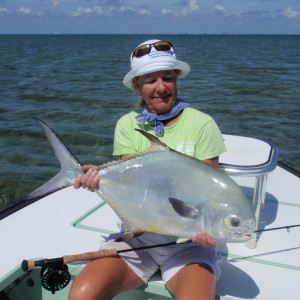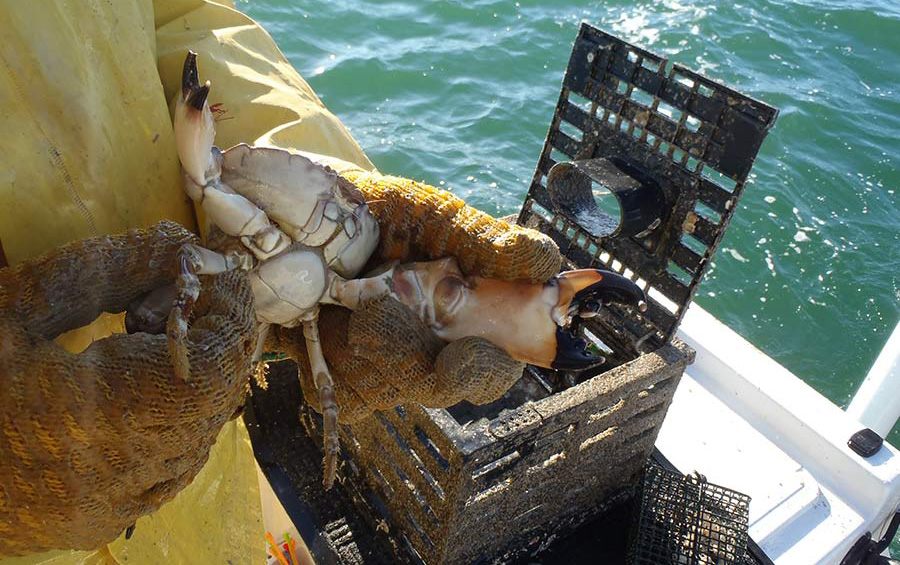“It was the best of times; it was the worst of times” pretty much sums up Florida’s 2018-19 stone crab harvest season.
The season from Oct. 15 to May 15, 2019, saw its lowest landings in history — about 1.9 million pounds. The likely blame goes to a whole host of environmental factors, including a stubborn two-year red tide bloom along the southwest Florida coast; the Category 5 fall blitzkrieg by Hurricane Michael in the panhandle; and the hangover from Hurricane Irma’s 2017 raking of the Keys’ fertile bay bottom.
But stone crab wholesale value skyrocketed to a record $30 million, fueled by strong consumer demand in a robust U.S. economy that kept trappers working despite meager harvests.
Forecasting the outcome of the 2019-20 season is anybody’s guess, says 50-year industry veteran Gary Graves, operator of Keys Fisheries in Marathon — the state’s largest producer of the unique Florida delicacy and supplier of the famed Joe’s Stone Crab restaurants and markets.
“To tell you what’s gonna happen this coming year, Lord knows,” Graves said. “Even with 50 years of experience, I can’t guess.”
Although the Keys were spared the spread of the red tide algae that plagued Gulf of Mexico waters from Tampa Bay south to Marco Island, trap yields along the island chain were lower than usual. Veteran fishermen like Tim Daniels struggled to fill their traps.
“We pull up to 800 traps in a day. A lot of the year, we were struggling to catch 200 pounds,” Daniels said. “Demand rose the price enough to where we could scrape by. If they had not raised the price, we would not have made it.”
Keys Fisheries, where Daniels is based, paid fishermen between $12 and $33 per pound of claws, depending on size.
Meanwhile, some stone crabbers in the red tide zone were driven out of business. Others shifted their effort north, deploying traps from Crystal River to St. Marks in the Big Bend region. Still, they didn’t have a good season either, according to Tom Willitts, whose four boats fished the waters between Cedar Key and St. Marks.
“Terrible,” Willitts said of his boats’ 1/4-to-1/3-pound per-trap average yield. “The storm (Hurricane Michael) did quite a bit of damage to the fishery.”
But he said he sold his catch wholesale for $15 per pound for small claws up to $45 per pound for jumbos.
“The price was high; didn’t have any choice but to be high,” Willitts said.
Graves said he’s just hoping for a “normal” season of 2.5 million to 3 million pounds this time around with no more storms and algae blooms. So far this summer, red tide blooms have been scant to nonexistent along the Gulf Coast.
Ryan Gandy, a research scientist with the Florida Fish and Wildlife Conservation Commission’s Fish and Wildlife Institute, says it’s too early to make predictions about the upcoming season.
Gandy said he and colleagues will be sampling in gulf waters affected by last season’s red tide to see if crab populations have recovered.
“We’ll see in a year or two years if there’s gap in young crabs because of the red tide and hurricanes,” Gandy said.
But, the scientist points out, stone crab landings have been going down since 2000, influenced by other environmental factors, such as warmer, calmer winters that fail to spur the crustaceans to move around, and heavy fishing pressure.
One positive note: Gandy has been working with the commercial fishing industry to develop a cull ring for plastic stone crab traps that he said reduces bycatch and tends to retain larger, legal-sized crabs instead of sublegals.
He said fishermen have embraced the devices with an estimated 7,000 to 8,000 traps now equipped with them. The gear is expected to become mandatory in the future, pending a decision by the state fisheries agency.







